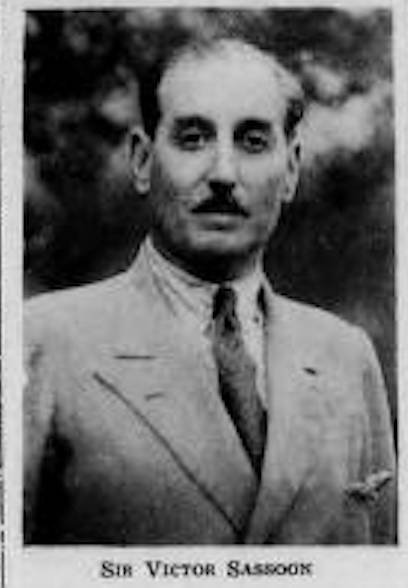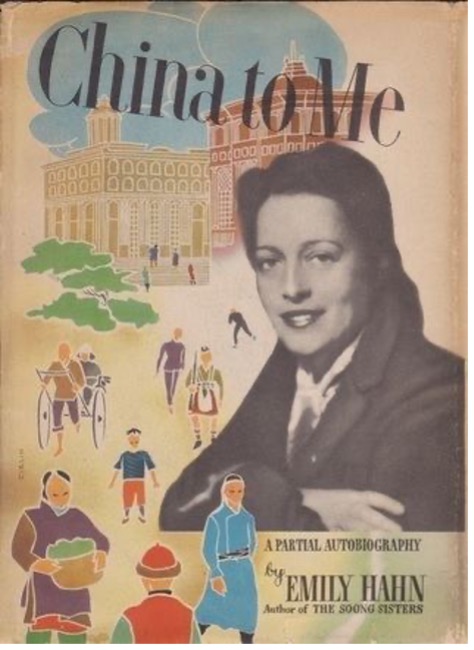Archive
Victor Sassoon
- Victor
- Sassoon
- 20-12-1881
- Napoli (IT)
- 10-08-1961
- Nassau (BS)
- Entrepreneur
Victor Sassoon was a descendant of the Baghdadi Jewish Sassoon merchant family. He contributed significantly to a real estate boom in Shanghai in the 1920s and 1930s and helped European Jews in the Shanghai Ghetto. An ambitious amateur photographer, he produced many images of people and events of the time.
Word Count: 50

Photograph of Victor Sassoon. G. L. “Die Immigration – ein Problem.” Shanghai Woche (Weekly Review), 30 March 1939, p. 3. 
Hahn, Emily. China to Me. A Partial Autobiography. BCE, The Blakiston Company, 1944, cover. Betta, Chiara. "From Orientals to Imagined Britons. Baghdadi Jews in Shanghai." Modern Asian Studies, vol. 37, no. 4, 2003, pp. 999-1023
Field, Andrew David. Shanghai's Dancing World – Cabaret Culture and Urban Politics, 1919-1954, The Chinese University of Hong Kong Press 2010.
Kögel, Eduard. Architektur im Widerstand. Rudolf Hamburger im Netzwerk der Geheimdienste. DOM publishers 2021.
Ti, Wei Peh. "A Peek Backwards into the Jewish Community of Shanghai." Journal of the Hong Kong Branch of the Royal Asiatic Society, vol. 32, 1992, pp. 149-163.Word Count: 77
Sassoon Building, 20 Nanking Road, International Settlement (now Fairmont Peace Hotel, 20 Nanjing Dong Lu, Huangpu Qu) Shanghai
- Shanghai
- Mareike Hetschold. "Victor Sassoon." METROMOD Archive, 2021, https://archive.metromod.net/viewer.p/69/2952/object/5138-11381989, last modified: 14-09-2021.
-
Victor PodgourskyArtistDesignerTeacherShanghai
Victor Podgoursky spent more than twenty-five years in Shanghai, working as an artist, teacher and designer. As a long-standing member of the Shanghai Art Club, he acted as the resident art critic and an instructor in life drawing and painting for the members.
Word Count: 43
Leonid SkvirskyPhotographerIllustratorShanghaiLeonid Skvirsky was one of the most successful photographic artists in Shanghai. His experimental take on lighting and staging of the models ensured him critical acclaim, awards in international competitions and patronage of the elites.
Word Count: 35
Sam Bejan TataPhotographerShanghaiSam Tata, descendant of a Parsi family of merchants from India, was a photographer and photojournalist. He is known for his documentary style, his portraits and his documentation of the arrival of the victorious Communist troops in Shanghai in 1949 at the end of the Sino-Japanese War (1946) and the Civil War.
Word Count: 50
Hermann SchieberthPhotographerArt dealerShanghaiHermann Schieberth was a successful photographer who had two studios in Austria (from 1909/10? onwards): one in Vienna and the other in Kaltenleutgeben. Due to his Jewish background he had to flee in 1938 and arrived in Shanghai in 1939.
Word Count: 37
Modern HomesArchitecture and Furniture CompanyShanghaiThe three firms The Modern Home, Modern Home and Modern Homes existed from 1931 until 1950. Run by the Paulick brothers together with the Jewish emigrant Luedecke, the firms provided work for many emigrants.
Word Count: 32
Ward Road Gaol; Tilanqiao PrisonBuildingShanghaiThe Ward Road Gaol (today Tilanqiao Prison) had space for 7000 prisoners.The rather small new extension for foreign prisoners designed by the architect Rudolf Hamburger consisted of two buildings and a pavilion for the guards.
Word Count: 35